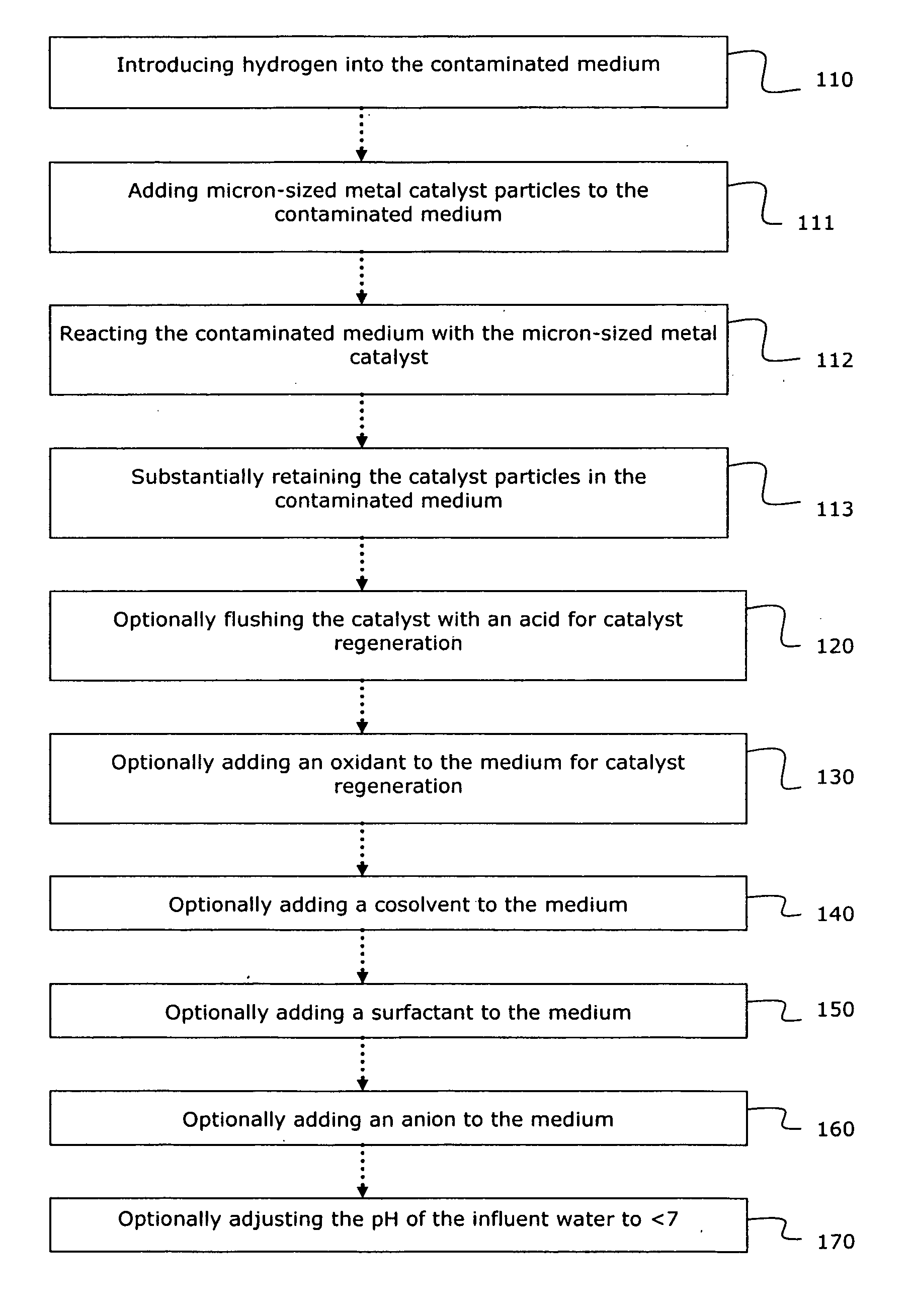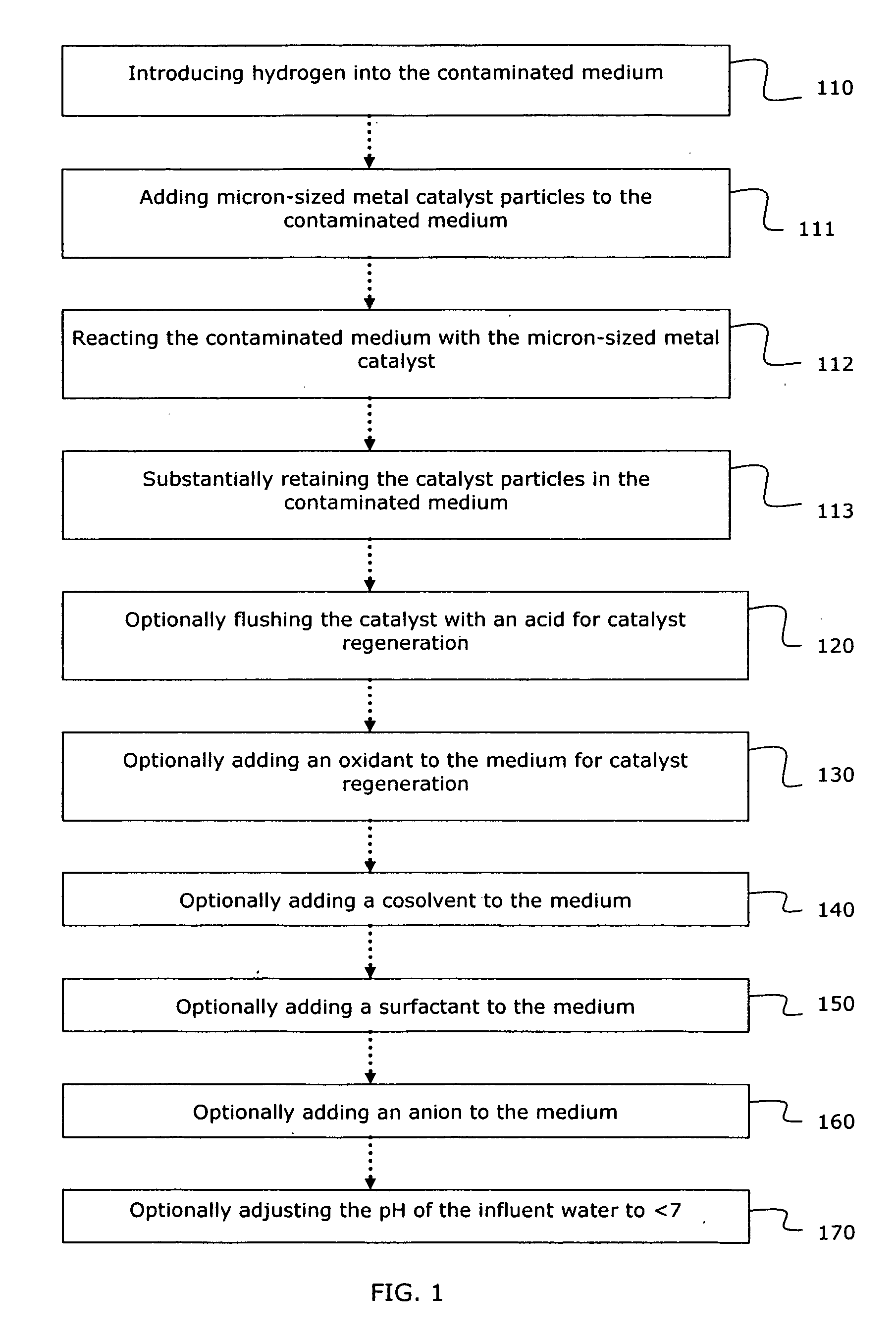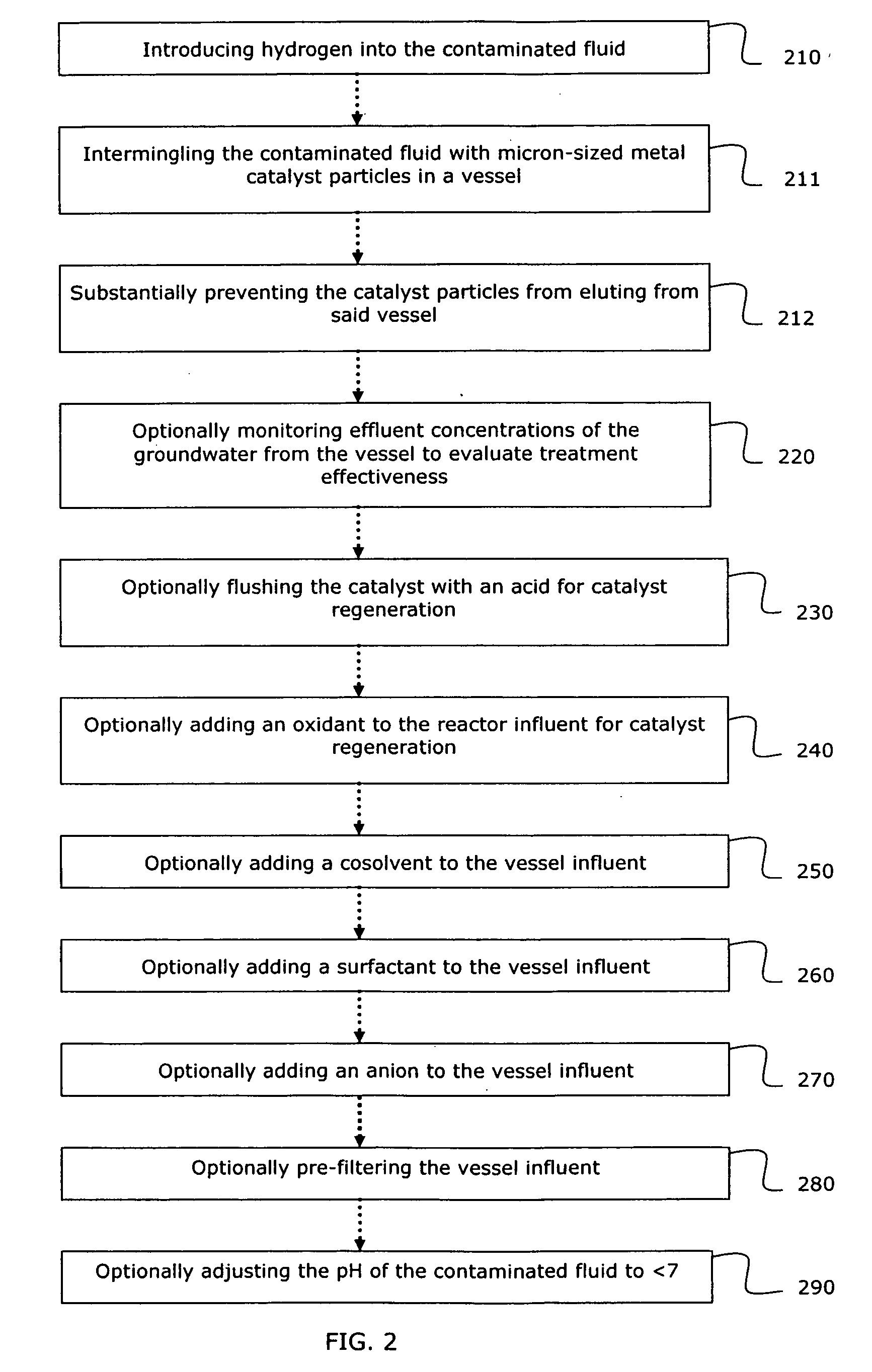System and method for catalytic treatment of contaminated groundwater or soil
a technology of contaminated groundwater and catalytic treatment, applied in the direction of physical/chemical process catalysts, multi-stage water/sewage treatment, separation processes, etc., can solve the problems of nitrates chlorinated solvents, n-nitrosodimethylamine (ndma), and other explosive compounds, which pose serious environmental problems, undesirable secondary waste streams, and health risks of hazardous compounds. , to achieve the effect of preventing the eluting
- Summary
- Abstract
- Description
- Claims
- Application Information
AI Technical Summary
Benefits of technology
Problems solved by technology
Method used
Image
Examples
example 1
[0046] Tests were conducted to evaluate the use of nickel catalysts for the treatment of chlorinated ethenes, specifically PCE and NDMA. Results of laboratory batch experiments using an aqueous solution containing an initial loading of 50 mg / L NDMA, 1 mg / L tetrachloroethene (PCE), and 5 mg / L nitrate are shown in FIGS. 4 (NDMA) and 5 (PCE). About 0.1 grams of micron-sized nickel alumina catalyst particles, having an average diameter of <60 μm, and dissolved hydrogen were used to treat the target contaminants. The tests were conducted at ambient conditions. Results are plotted relative to controls that contained no nickel catalyst. These data show that nickel catalysts are able to rapidly degrade aqueous mixtures of chlorinated ethenes and NDMA. Similar experiments performed using natural groundwater were also conducted which also evidenced rapid degradation of PCE, TCE, and NDMA.
example 2
[0047] Tests were conducted using a bench scale reactor for treating an artificial groundwater containing TCE, sulfate, nitrate, carbonate and manganese. The tests were carried out in a 3-liter glass vessel, using 10 grams of micron-sized nickel alumina catalyst having an average particle diameter of <60 μm and an influent dissolved oxygen content of 8 mg / L. Artificial groundwater containing target contaminants was pumped into the reactor, mixed with the catalyst particles and dissolved hydrogen, and withdrawn through the membrane filter, located in the center of the vessel. The dissolved hydrogen in an amount of was delivered to the groundwater via silicone tubing that was spiraled around the inside of the vessel and pressurized to approximately 15 psi of hydrogen gas. The reactor was operated at ambient conditions. Use of the membrane filter was required to keep the nickel catalyst inside the reactor (parallel tests were performed to verify that no measurable dissolved or colloida...
example 3
[0049] Tests were also conducted utilizing the same parameters as Example 2, except that the artificial groundwater contained TCE, NDMA, sulfate, nitrate, carbonate and manganese. As shown in FIG. 7, for the reactor influent and effluent concentrations for each of the reactor volumes tested, results show the effective treatment of TCE and NDMA. The NDMA effluent concentrations were below the detection limit of approximately 60 μg / L. Subsequent testing showed that treatment of NDMA to below 1 ng / L is attainable.
PUM
| Property | Measurement | Unit |
|---|---|---|
| diameter | aaaaa | aaaaa |
| diameter | aaaaa | aaaaa |
| diameter | aaaaa | aaaaa |
Abstract
Description
Claims
Application Information
 Login to View More
Login to View More - R&D
- Intellectual Property
- Life Sciences
- Materials
- Tech Scout
- Unparalleled Data Quality
- Higher Quality Content
- 60% Fewer Hallucinations
Browse by: Latest US Patents, China's latest patents, Technical Efficacy Thesaurus, Application Domain, Technology Topic, Popular Technical Reports.
© 2025 PatSnap. All rights reserved.Legal|Privacy policy|Modern Slavery Act Transparency Statement|Sitemap|About US| Contact US: help@patsnap.com



